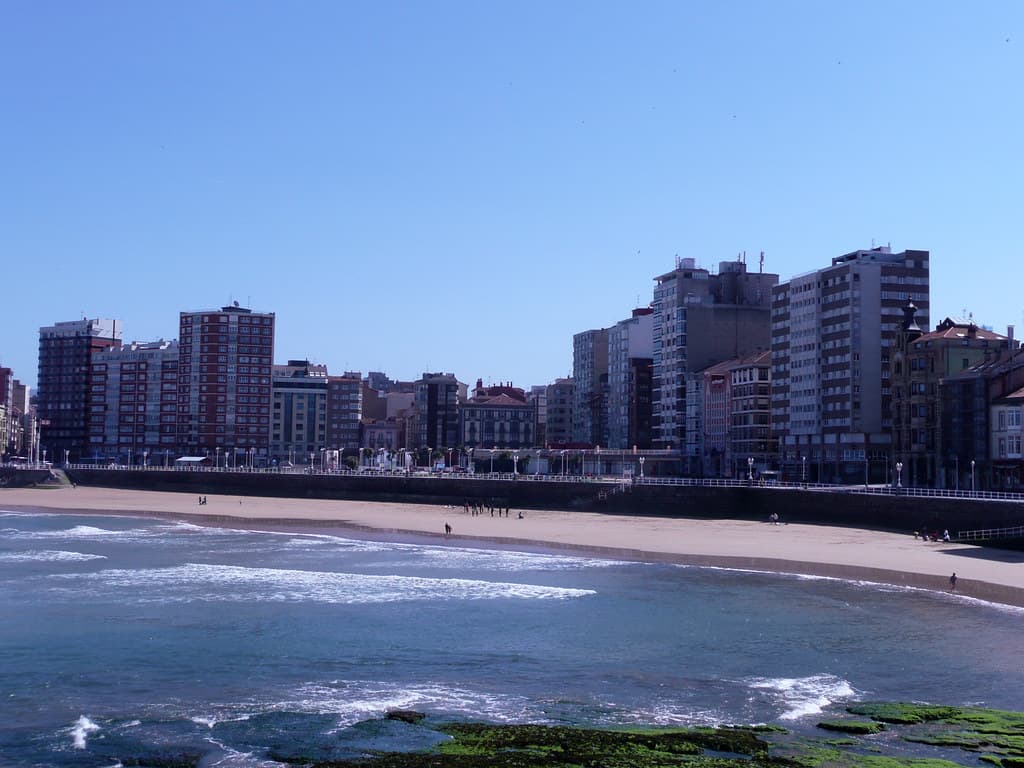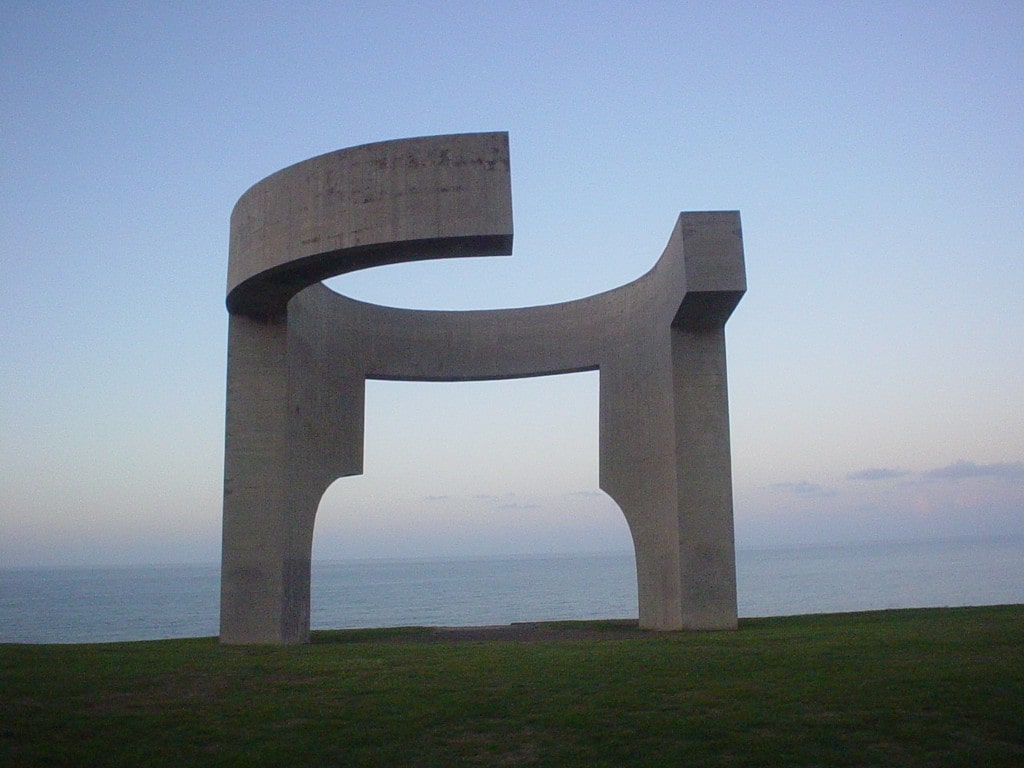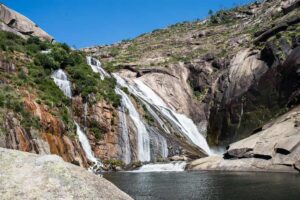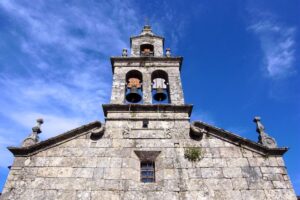
In the heart of the Asturian coast, Gijón stands as a city that combines sea, mountains, culture, and spirituality.
For many pilgrims, it is not only an important stage of the Camino del Norte, but also an opportunity to stop, breathe, and connect with one of the most welcoming cities in northern Spain. Whether as a starting point, a break, or the end of a stage, this town deserves to be discovered at a leisurely pace.
Índice de contenidos
- 1 The Camino del Norte through Gijón: an experience between sea and mountains
- 2 Historic Gijón: heritage that connects with the past
- 3 Natural Gijón: beaches, gardens, and spots to breathe
- 4 Asturian cuisine in Gijón: flavours to recharge your energy
- 5 Practical tips for your visit to Gijón (and the Camino de Santiago)
The Camino del Norte through Gijón: an experience between sea and mountains
Before talking about the wonders of Gijón, which are many, let us introduce you to the Camino del Norte, the route that passes through the largest city in Asturias.
As you may know, this is one of the oldest historical Jacobean routes and runs along much of the Cantabrian coast. Unlike other more heavily trafficked routes, this alternative offers a direct connection with the wild nature of the coastline: beaches open to the Cantabrian Sea, traditional villages, and landscapes of enormous ecological and spiritual value.
A coastal route that enchants: more than cliffs and villages
The constant ascents and descents require a bit more physical effort, but in return, they offer views and a connection with the surroundings that are hard to forget.
We’ve told you that you’ll see many beaches and cliffs. However, if you start the Camino de Santiago from Bilbao, the capital of contemporary art and a city of contrasts, you’ll notice that its first steps are in reclaimed industrial landscapes and fishing villages. Once in Cantabria, the views shift back to more natural settings.
In contrast, the Ribadeo Camino de Santiago offers a visual transition from the green of Asturias to the magical landscapes of Galicia, passing through spots such as Playa de las Catedrales and the Mariña lucense.
Both sections allow pilgrims to enjoy Gijón as a landmark, where the city presents itself as a turning point: it is the moment to enjoy, rest, reflect, or prepare for what lies ahead.
Why choose this route? A comparison with other caminos
Now let’s talk about other routes and compare them. None is better than the other, but it’s always good to know what each option offers:
- Camino Francés: the most popular route with the most infrastructure. Ideal for those who want to socialize, meet pilgrims from around the world, and have services at every step.
- The Camino de Tui to Santiago stands out for its accessible route, historic towns, and excellent signage. A perfect option for first-time pilgrims or those with fewer days available.
- Camino Primitivo: a mountainous and physically demanding route. It passes through rural areas in the interior of Asturias and Galicia. It is considered the most authentic and spiritual variant, but also one of the toughest.
- Camino Inglés. Also ideal for those with fewer days, offering a good balance between heritage, accessibility, and services.
Regardless of the section chosen, having an organised itinerary, luggage transport, or pre-booked accommodation provides peace of mind and enhances the experience. Having a team of experts in the organised Camino de Santiago trip behind you allows you to focus on what really matters: walking, discovering, and enjoying.
Historic Gijón: heritage that connects with the past
Gijón is a city with centuries of history behind it. From its Roman origins to its industrial past, every corner holds a mark that deserves to be explored.
Cimavilla neighbourhood
This neighbourhood, located at the top of a hill next to the sea, is the old town of Gijón. Its cobbled streets, colourful houses, and seafaring atmosphere preserve the original spirit of the city. Here, fishermen, merchants, and craftsmen have coexisted for centuries. Today, it breathes an authentic air, with views of the sea and a vibrant cultural life.
Campo Valdés Roman Baths
Located at the foot of the Cimavilla hill, these baths date back to the 1st century AD and are one of the best-preserved remnants of Roman presence in the city. A visit here allows you to imagine what daily life was like during the Empire and understand the strategic importance of the city in ancient times.
Revillagigedo Palace and Plaza Mayor

A few steps from the marina, this monumental complex combines baroque architecture and contemporary cultural spaces. The square is an excellent place to take a break and observe the pulse of the city, surrounded by buildings with history.
San Pedro Church
Located at the edge of the sea, at the end of the San Lorenzo promenade, and at the foot of the Cimavilla hill, this church is one of the most iconic temples in Asturias. Built in neo-Gothic style with historicist touches, it was rebuilt in the 20th century on the remains of a pre-Romanesque church. Its silhouette against the Cantabrian Sea is one of the most recognisable postcards of the city.
Universidad Laboral de Gijón
On the outskirts of the city centre stands one of the largest buildings in Spain, originally conceived as an orphanage and school. With monumental style and an almost palatial appearance, it now hosts cultural and artistic activities. Its tower, reminiscent of the Giralda in Seville, offers one of the best panoramic views of Gijón.
Asturias Railway Museum
Located in the old train station facilities, this museum is a journey through the railway history of northern Spain. It houses locomotives, restored carriages, and technical material that explains the industrial transformation of the city and its connection with the rest of the country.
Natural Gijón: beaches, gardens, and spots to breathe
Its natural surroundings not only accompany the pilgrim on their journey but invite them to stop and take in the beauty. It is a city that opens up to the sea and extends towards green areas that oxygenate both body and mind.
San Lorenzo Beach

It is the most iconic image of Gijón: an urban beach over 1.5 kilometers long, with a promenade, waves for surfers, and benches for gazing at the horizon. Many pilgrims begin or end their day with a walk along this shore.
Cerro de Santa Catalina and Elogio del Horizonte

At the end of the Cimavilla neighbourhood stands this hill, crowned by a sculpture by Eduardo Chillida that frames the sea: the Elogio del Horizonte. The wind and the sound of the sea amplify the experience, making it one of the most special places in the city.
Atlantic Botanical Garden
A little further from the city centre, this green space features a collection of flora from the northern peninsula and Atlantic ecosystems. It is ideal for connecting with the biodiversity surrounding the Camino del Norte and taking a break in the heart of nature.
Isabel la Católica Park and Piles River Environment
Very close to the beach, this urban park combines paths, ponds, and wooded areas. The ducks, swans, and birds that inhabit the park accompany anyone who decides to rest or have a snack outdoors.
San Lorenzo Cape and Coastal Path to La Ñora
For those with a few extra hours, the coastal path heading east from Gijón offers a spectacular walk between cliffs, forests, and hidden coves. It’s an excellent way to extend the stage or prepare for the next one.
Asturian cuisine in Gijón: flavours to recharge your energy
Asturian cuisine is known for its heartiness, authenticity, and flavour. Here, pilgrims will find dishes made with local ingredients, perfect for replenishing energy after a challenging stage.
The most iconic dishes include fabada, pote asturiano, or cachopo, all rich in protein and nutrients. Fresh fish and seafood are also abundant, accompanied by simple but delicious sides. The natural cider, poured with skill, is the region’s signature drink and is part of every typical meal.
Practical tips for your visit to Gijón (and the Camino de Santiago)
- Best time to visit. Spring (April to June) and early autumn (September and October) are ideal for walking the Camino del Norte and visiting the city. The temperatures are mild, the vegetation is at its peak, and there are fewer crowds than in midsummer.
- How many days should you dedicate to Gijón? It can be enjoyed in a single day if you’re on the route, but it’s recommended to at least stay overnight and dedicate half a day to discovering the historic centre and its natural surroundings. If time allows, spending a full day lets you enjoy a well-deserved break and discover less-travelled spots.
Gijón is much more than just a stop on the Camino de Santiago. It is a crossroads between culture, history, and nature, a point where the sea embraces the pilgrim, and the city opens generously to those who arrive with a backpack and a staff. Whether as a stop on the Camino del Norte, a starting point, or a place to rest, it offers a perfect balance between urban and spiritual. Let yourself be carried away by its landscapes, its people, and its energy… and continue the Camino with your senses wide awake.









